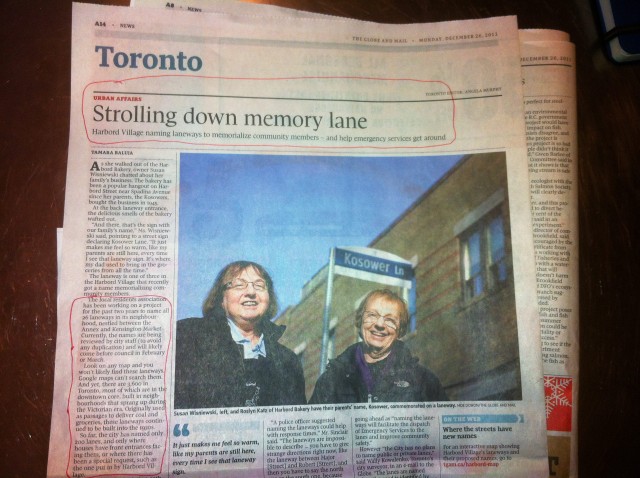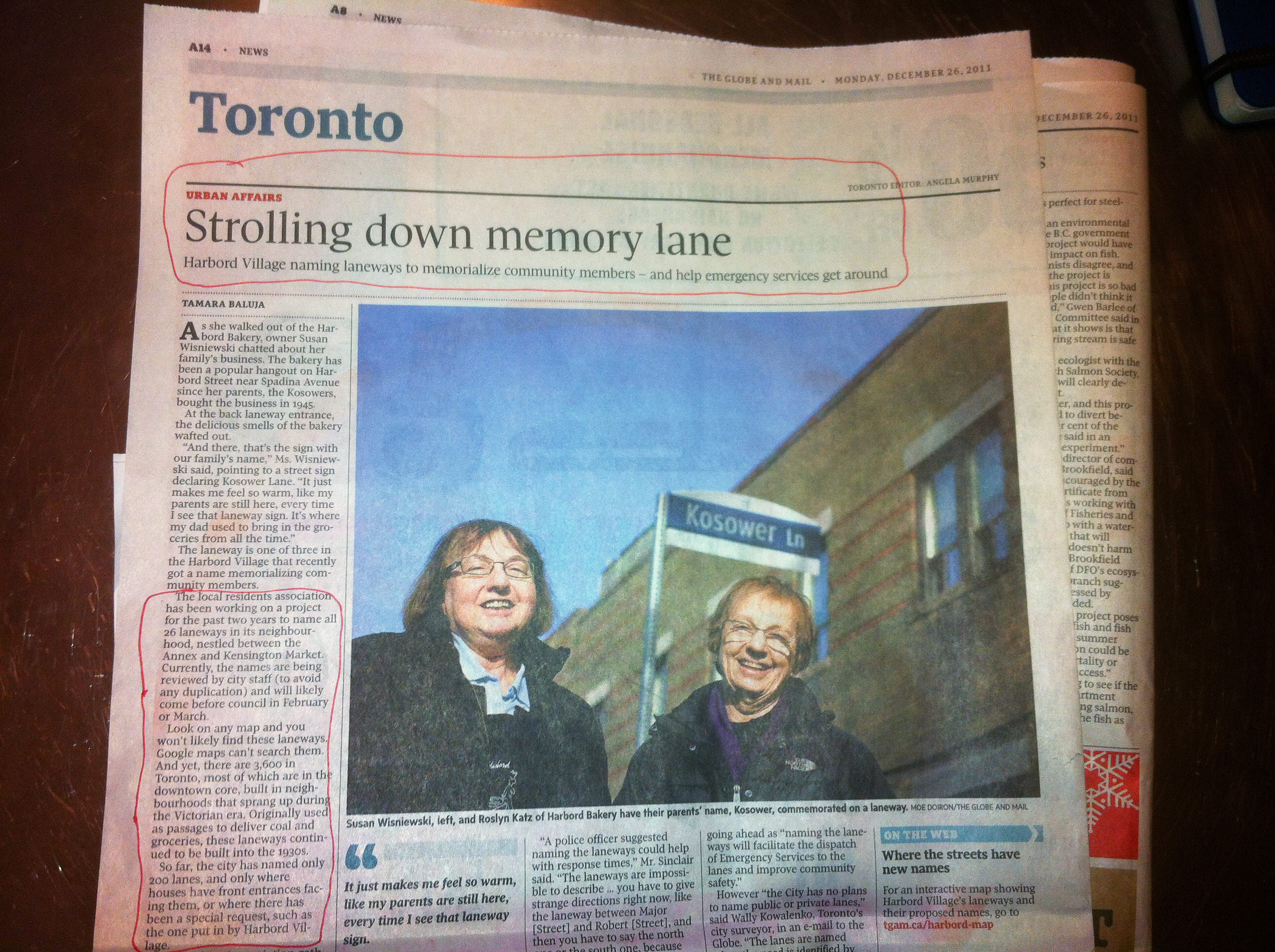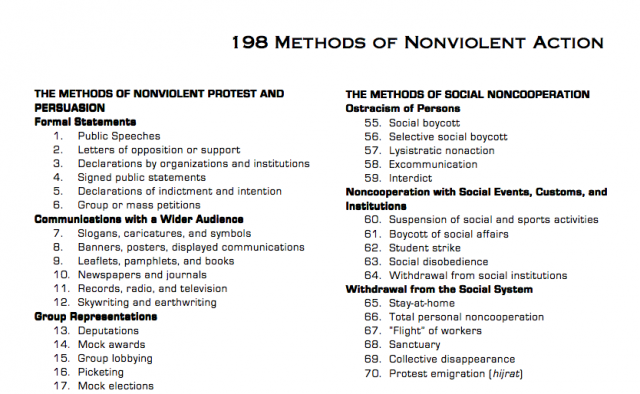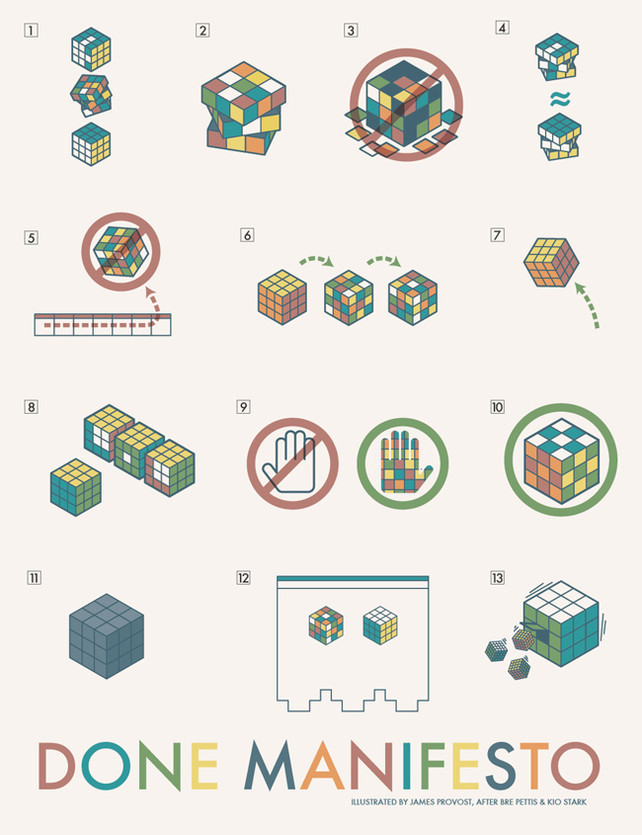
I saw this and it made me think of our discussion last week on a new project somehow (un)officially demarcating important people in Windsor.
From the article, discussing one particular laneway named after a local family who own a nearby bakery:
The laneway is one of three in the Harbord Village that recently got a name memorializing community members. The local residents association has been working on a project for the past two years to name all 26 laneways in its neighbourhood, nestled between the Annex and Kensington Market. Currently, the names are being reviewed by city staff (to avoid any duplication) and will likely come before council in February or March.
You can read the article in full on the Globe’s website.
It made me think about how we might consider scaling up or scaling out the project we had discussed — maybe we should try to name all the alleyways in the city?








